
RESEARC H Open Access
High systemic levels of interleukin-10, interleukin-
22 and C-reactive protein in Indian patients are
associated with low in vitro replication of HIV-1
subtype C viruses
Juan F Arias
1,2
, Reiko Nishihara
3
, Manju Bala
1,4
, Kazuyoshi Ikuta
1*
Abstract
Background: HIV-1 subtype C (HIV-1C) accounts for almost 50% of all HIV-1 infections worldwide and
predominates in countries with the highest case-loads globally. Functional studies suggest that HIV-1C is unique in
its biological properties, and there are contradicting reports about its replicative characteristics. The present study
was conducted to evaluate whether the host cytokine environment modulates the in vitro replication capacity of
HIV-1C viruses.
Methods: A small subset of HIV-1C isolates showing efficient replication in peripheral blood mononuclear cells
(PBMC) is described, and the association of in vitro replication capacity with disease progression markers and the
host cytokine response was evaluated. Viruses were isolated from patient samples, and the corresponding in vitro
growth kinetics were determined by monitoring for p24 production. Genotype, phenotype and co-receptor usage
were determined for all isolates, while clinical category, CD4 cell counts and viral loads were recorded for all
patients. Plasmatic concentrations of cytokines and, acute-phase response, and microbial translocation markers
were determined; and the effect of cytokine treatment on in vitro replication rates was also measured.
Results: We identified a small number of viral isolates showing high in vitro replication capacity in healthy-donor
PBMC. HIV-1C usage of CXCR4 co-receptor was rare; therefore, it did not account for the differences in replication
potential observed. There was also no correlation between the in vitro replication capacity of HIV-1C isolates and
patients’disease status. Efficient virus growth was significantly associated with low interleukin-10 (IL-10), interleukin-
22 (IL-22), and C-reactive protein (CRP) levels in plasma (p < .0001). In vitro, pretreatment of virus cultures with IL-
10 and CRP resulted in a significant reduction of virus production, whereas IL-22, which lacks action on immune
cells appears to mediate its anti-HIV effect through interaction with both IL-10 and CRP, and its own protective
effect on mucosal membranes.
Conclusions: These results indicate that high systemic levels of IL-10, CRP and IL-22 in HIV-1C-infected Indian
patients are associated with low viral replication in vitro, and that the former two have direct inhibitory effects
whereas the latter acts through downstream mechanisms that remain uncertain.
* Correspondence: ikuta@biken.osaka-u.ac.jp
1
Department of Virology, Research Institute for Microbial Diseases, Osaka
University, Suita, Osaka 565-0871, Japan
Arias et al.Retrovirology 2010, 7:15
http://www.retrovirology.com/content/7/1/15
© 2010 Arias et al; licensee BioMed Central Ltd. This is an Open Access article distributed under the terms of the Creative Commons
Attribution License (http://creativecommons.org/licenses/by/2.0), which permits unrestricted use, distribution, and reproduction in
any medium, provided the original work is properly cited.

Background
HIV-1 subtype C is the most prevalent HIV-1 subtype
worldwide, accounting for more than 50% of HIV-1
infections worldwide in 2004 [1]. It predominates in
countries with 80% of all global HIV-1 infections (sub-
Saharan Africa, India) and is rapidly increasing in China
and Latin America [2-5]. The reasons for the increase in
HIV-1 C are not known, but may be related to host,
viral, or socioeconomic factors.
Accumulating evidence suggests that HIV-1C may be
unique in its spread and natural history, but the
mechanistic basis for these differences remains
unknown. In a West African cohort, individuals infected
with HIV-1C were reported to be more likely to develop
AIDS than those infected with HIV-1A [6]. In a Kenyan
study, patients infected with HIV-1C showed lower CD4
cell counts and higher viral loads than patients infected
with other subtypes [7]. Functional studies of HIV-1B
and other subtypes have shown that progression to
AIDS is associated with a selection of high-growth
potential viral variants that use CXCR4 as a co-receptor
[8,9]. However, HIV-1C is unique in maintaining its pre-
dominant CCR5 tropism throughout infection, which
may affect its transmission and pathogenesis [10,11],
and there are some contradicting reports about its repli-
cative properties [12,13].
Subtype differences in vitality and fitness have also
been reported. HIV-1C variants replicate less efficiently
in macrophages and PBMC when compared to subtype
B viruses, but more efficiently in Langerhans cells and
in the presence of immature dendritic cells (iDCs)
[14,15]. However, the utilization of diverse cellular sys-
tems and assays to measure phenotypic properties of R5
and ×4 HIV-1 viruses has led to substantial confusion in
the current literature, and the true biological mechan-
isms underlying subtype differences in replication capa-
city are still poorly understood.
At the viral level, it has been suggested that an extra
NF-B binding site in the long terminal repeat may
enhance gene expression, altering the transmissibility
and pathogenesis of C viruses [16,17]. Other unique bio-
logical features of HIV-1C viruses include an increased
responsiveness to cellular proteins and cytokines [18],
low frequency of sincytium inducing (SI) viruses [19]
and a number of unique subtype signatures across the
viral genome [20,21].
Conversely, the influence of host factors on determin-
ing subtype differences in replication potential has
received little attention in the literature. HIV-1 replica-
tion is under continuous regulation by a complex cyto-
kine network produced by a variety of cells, and the
impact of cytokines on HIV-1 replication has been
amply studied in myeloid cells [22]. A number of
cytokines have been reported to modulate HIV replica-
tion in vitro, with their effects being inhibitory (IFNa,
IL-10, IL-13), stimulatory (TNF, IL-1, IL-6) or bi-func-
tional (IL-4, IFNg). Furthermore, a recent report showed
that production of IL-10 in pregnant seropositive
women helped them control HIV-1 replication and
reduce the chance of transmission to the fetus [23].
Therefore, we argue that differences in the host cyto-
kine environment affect the immune activation state,
and that in turn these differences might affect the in
vitro replication capacity of HIV viruses. Consequently,
we studied whether the host cytokine environment con-
tributes to measurable differences in replication capacity
of HIV-1C viruses.
Here we identified a small number of viral isolates
showing high in vitro replication capacity in healthy-
donor PBMC. Efficient virus growth was significantly
associated with a triad of low IL-10, IL-22 and CRP
levels in plasma (p < .0001), and pretreatment of virus
cultures with IL-10 and CRP resulted in a significant
reduction of virus production in vitro. Additionally, sys-
temic IL-22 levels correlated positively with CRP and
IL-10, and negatively with plasmatic lipopolysaccharide
(LPS), an indicator of microbial translocation from the
gut; this suggests IL-22 mediates its anti-HIV effects
indirectly through interactions with IL-10 and CRP, and
also through its protective effect on epithelial function.
Taken together, these results indicate that a complex
host environment characterized by an IL-10 dominant
immunosuppressive profile that reduces immune activa-
tion, in concert with a subclinical inflammatory
response of peripheral tissues mediated by IL-22 and
CRP, appears to contribute to the observed low replica-
tion capacity of HIV-1C viruses in PBMC. Furthermore,
both IL-10 and CRP showed direct anti-HIV action in
vitro,whereasIL-22givenitslackofeffectonimmune
cells appears to act through downstream mechanisms
that remain poorly understood.
Methods
Patients and samples
Plasma and PBMC samples were obtained from 243
HIV-1-infected patients attending the Integrated Coun-
seling and Testing Centre at Safdarjang Hospital, New
Delhi, India, between February 2006 and May 2009. Of
these, only the 85 subjects for whom successful viral iso-
lation and complete biological characterization of pri-
mary isolates was possible were included in the analysis.
All patients had a serologic diagnosis of HIV infection
established prior to inclusion in the study, and were
attending a reference center for follow-up. However,
since the number of patients who were receiving
HAART was very low in our sample, these cases were
Arias et al.Retrovirology 2010, 7:15
http://www.retrovirology.com/content/7/1/15
Page 2 of 15

eliminated and only treatment-naïve patients were
included in the analysis. CD4
+
T cells were counted by
flow cytometry (Becton-Dickinson, CA). Viral load was
measured by the Amplicor HIV-1 Monitor test (Hoff-
man-La Roche). The study was approved by the local
Ethics Committee, and all patients provided their writ-
ten informed consent to participate.
Virus Isolation
HIV-1 was isolated from patients peripheral blood
mononuclear cells (PBMC) when available by co-culture
with phytohemagglutinin (PHA)-activated healthy-donor
PBMC [24]. In the other cases, isolates were obtained by
culturing 100 μl of plasma overnight with PHA-activated
PBMC, as previously described [25]. Viral growth was
monitored in culture supernatants every 3 days using a
commercial p24 antigen kit (Zeptometrix, Buffalo, NY).
Titration of HIV-1 isolates
The infectivity titer for each isolate was determined by
measuring HIV p24 production after 7 days using an
endpoint dilution assay, as described in detail elsewhere
[26]. The tissue culture dose for 50% infectivity
(TCID
50
) was calculated using the Spearman-Karber
formula.
Viral replication kinetics
All viral isolates that replicated to at least 100 pg/ml of
p24 antigen in the initial culture were saved and further
expanded by infecting new batches of PHA-stimulated
PBMC from normal donors. The in vitro growth kinetics
of the viruses studied were determined in triplicate by
mono-infection of PBMC at a multiplicity of infection
(MOI) of 0.001 and monitoring for p24 production over
a period of 12 days post-infection (p.i.) The virus stock
was diluted to obtain a MOI of 0.001 IU/PBMC, based
on the TCID
50
(IU/ml) of each viral stock and a number
of 1 × 10
6
cells, as previously described [27]
Phenotyping
Co-receptor usage was determined in human astro-
glioma U87 cell lines stably expressing CD4 and co-
expressing CCR5 or CXCR4 chemokine receptors as
described before [28]. Additionally, syncytial characteri-
zation was determined by the MT-2 syncytium-forming
assay. For this, 1 × 10
6
fresh PBMCs were co-cultivated
with 1 × 10
6
MT-2 cells, as described [29].
Genotyping
Virus genotype was determined by conventional bulk
sequence analysis of the patient samples. For this, the
pro gene (297 bp), a p24 fragment of the gag gene (450
bp), and a C2-V5 fragment of the env gene (708 bp) of
viral isolates were amplified by nested PCR and
sequenced for genotype determination. Briefly, viral
RNA was extracted from patient serum samples using
the QIAamp Blood kit (Qiagen, Chatsworth, CA), and
nested RT-PCR reactions were performed to amplify the
fragments mentioned using primer sets and cycling con-
ditions described previously [30,31]. As a positive con-
trol, we used an infectious molecular clone of Indian
HIV-1C, Indie-C1 [32]. PCR products were directly
sequenced using a Big Dye Terminator, version 1.1
(Applied Biosystems), in accordance with the manufac-
turer’s instructions. Sequences were trimmed manually
and aligned with sequences representative of the HIV-1
group M subtypes available in the Los Alamos database
using CLUSTALX [33].
Determination of cytokines, acute-phase response and
microbial translocation markers
Plasmatic concentrations -in pg/ml- of tumor necrosis
factor-alpha (TNF-a), interferon-gamma (IFNg), inter-
leukin (IL)-1, IL-4, IL-6, IL-10, IL-17, IL-22, and C-reac-
tive protein (CRP) -in μg/ml- in patients’samples and
HIV-negative controls were determined quantitatively
using commercially available colorimetric immunoassays
(Quantikine Human Immunoassay kits) and carried out
as recommended by the manufacturer (R&D Systems,
Minneapolis, MN). Plasma LPS levels were determined
as described elsewhere [34], using the Limulus amebo-
cyte lysate assay (LAL) according to manufacturer’s
instructions (Lonza, Walkersville, MD).
Cytokine treatment of viral cultures
Healthy-donor PBMCs were pre-incubated for 1 hour at
37°C with several treatment schemes of recombinant
human IL-6, IL-10, CRP and anti-IL-10 mAb, followed
by incubation with 2 representative R/H phenotype HIV-
1C primary isolates and the infectious molecular clone
Indie-C1, at a MOI of 0.1. After incubation for 2 h, the
cells were extensively washed and cultured for 12 addi-
tional days. All treatments were added at concentrations
just high enough to elicit a maximum response, as mea-
sured by the ability to bind FcgRIIa in case of CRP, and
in a cell proliferation assay using a factor-dependent cell
line in case of the interleukins [35,36]. The anti-IL-10
antibody was added at the Neutralization Dose
50
(ND
50
).
Differences in virus growth compared with untreated
controls were evaluated by monitoring p24 production.
Statistical analysis
Comparisons between groups were performed using the
Pearson chi-square or Fisher’s exact test for categorical
variables. The distribution of continuous variables (viral
load, CD4 cell count, etc.) was compared between
patients with different viral replication phenotypes using
non-parametric methods (Mann-Whitney U test). The
Arias et al.Retrovirology 2010, 7:15
http://www.retrovirology.com/content/7/1/15
Page 3 of 15

non-parametric Spearman rank correlation test was used
to analyze the correlation between the in vitro replica-
tion capacity and disease progression, cytokine produc-
tion profile and disease progression, as well as the
correlation between systemic IL-22 levels and the acute-
phase and microbial translocation markers. Use of these
non-parametric statistics was required for the analysis of
observations that were not normally distributed. Fisher’s
ztransformation was used to calculate confidence inter-
vals to test the statistical significance of the correlation
coefficients (i.e., to determine the degree of confidence
that the true value of the correlation in the population
is contained within these intervals). Statistical signifi-
cance was defined as p< .05 values.
Results
Epidemiological and clinical characteristics of patients
Table 1 summarizes the epidemiologic, clinical, labora-
tory and virological data of the patients. The study sam-
ple (n = 85) comprised 53 men and 32 women with an
age distribution ranging from 10 to 55 years (mean,
33.37 years). Infection with HIV-1 occurred primarily
through heterosexual contact (82.4%), but with a clear
distinction according to gender. Transmission in men
was associated with extramarital activities, while women
acquired the virus mainly through their infected
spouses, and this difference was statistically significant
(p< .001). The mean viral load in plasma was high
(230,767 HIV-1 RNA copies/ml) consistent with
advanced HIV-1 disease, but, while the mean CD4
+
T-
cell count was low (255.6 cells/mm
3
), it never fell below
AIDS levels in almost half of the patients.
A small subset of viral isolates that replicate efficiently in
PBMC
Direct co-culture of patient PBMC/plasma with healthy-
donor cells was used for viral isolation, as described in
Methods. Of the 85 co-cultures which resulted in suc-
cessful viral isolation, most (75%) became positive in ≤6
days and reached peaks of p24 production by day 9,
although replication patterns varied widely. As shown in
Fig. 1, thirteen isolates had a suggestive “rapid/high”(R/
H) replication phenotype, replicating quickly and to
high titers in primary and secondary expansion cultures,
reaching high levels of p24 production (mean, 1745.7
pg/ml). The other 72 isolates did not produce high
levels of virus in primary or secondary expansion cul-
tures (mean, 188.9 pg/ml), showing a suggestive “slow/
low”(S/L) replication pattern [37,38].
Biological characterization of viral isolates
A frequently cited reason for enhanced cytopathicity and
more vigorous viral replication is the development of
viral variants that use CXCR4 as co-receptor [8].
Therefore, to further characterize the biology of our
HIV-1C isolates, syncytial phenotype and co-receptor
usageweredeterminedbymeansoftheMT-2syncytial
assay and the U87.CD4 cell assay, respectively. As
shown in Table 1, all but four of the primary isolates
used in this study (n = 85) replicated more efficiently in
U87. CD4 cells expressing CCR5 than in CXCR4-
expressing cells, indicating that they are R5 tropic
viruses. The fold difference of CCR5 over CXCR4
growth was nearly 100-fold, and the HIV p24 values in
U87.CD4.CXCR4 cells were mostly below 150 pg/ml.
Consistent with CCR5 co-receptor usage, isolates were
found to be non-syncytium inducing (NSI) due to their
inability to form syncytia in MT2 cells. More impor-
tantly, the only four isolates with preferential ×4 tropism
were all S/L viruses. These results indicate that the pre-
sence of R/H isolates in our study is independent of ×4
co-receptor usage. Additionally, all HIV-1 isolates were
subtyped in the C2-V5 region of the env gene by direct
sequencing and were shown to belong to HIV-1C, the
subtype predominant in 99% of infections in India [39].
Thirty isolates were also subtyped in the pro and gag
genomic regions and shown to belong to subtype C,
suggesting that these isolates were unlikely to be inter-
subtype recombinants, although this cannot be excluded.
Efficient replication does not correlate with disease
progression
Since viral strains with high-growth potential are selected
in late-stage disease [40], we analyzed the relationship
between markers of disease progression and viral replica-
tion. We categorized disease progression in our 85 HIV-
infected patients according to viral loads [41] as well as
the 1993 CDC Classification System & Expanded AIDS
Surveillance Definition for Adolescents and Adults [42],
which classifies patients on the basis of clinical conditions
associated with HIV infection and CD4
+
T- lymphocyte
counts. Clinical status and the CDC classification results
are summarized in Table 1, whereas analysis of viral load
and CD4
+
T-cell count is shown in Fig. 2A and 2B, respec-
tively. No significant differences were found between R/H
and S/L isolates when clinical category (p= .342), virus
load (p= .455) or CD4
+
T cell category (p= .063) were
compared, suggesting similar disease status for both
groups of subjects. Additionally, correlation analysis
further showed the lack of association between replication
and viral load or CD4
+
cellcountsasshowninFig.2C
and 2D, respectively.
Replication capacity of isolates is negatively associated
with patient plasmatic IL-10, IL-22 and CRP levels
The in vitro replication capacity of the viral isolates was
determined by monitoring p24 antigen production; and
according to their p24 production profiles, two groups
Arias et al.Retrovirology 2010, 7:15
http://www.retrovirology.com/content/7/1/15
Page 4 of 15

of isolates -R/H and S/L- were observed, as already
noted. When the cytokine responses were compared
between R/H and S/L isolates, we found a strong
negative association between the plasmatic levels of
IL-22 (p= .00004) and IL-10 (p= .0000007) and the in
vitro replication kinetics of HIV-1C primary isolates, as
shown in Fig. 3A and 3B, respectively (n = 85). No sta-
tistical differences in plasmatic levels of TNF-a,IFNg,
IL-4, IL-6, IL-1a, and IL-17 were observed between the
two groups, Fig. 3D through 3I. For comparison, the
plasmatic concentrations of all cytokines in 10 HIV-
uninfected healthy control subjects are shown, but as
expected most measurements fell below the detection
limit, given that the transient and paracrine character of
cytokines limits its detection in the absence of systemic
pathology [43].
Table 1 Characteristics of 85 Indian HIV-infected patients with R/H or S/L phenotype HIV-1C isolates
S/L
†
group (n = 72) R/H
‡
group (n = 13) Total (n = 85) p
number (%) * number (%) * number (%) *
EpidemiologicalData
Sex 0.758
Male 44 (61.1) 9 (69.2) 53 (62.4)
Female 28 (38.9) 4 (30.8) 32 (37.6)
Age (mean years ± SEM
§
) 33.7 ± 1.1 31.4 ± 1.5 33.4 ± 0.9 0.426
Transmission route 0.184
Heterosexual: extramarital 31 (43.1) 6 (46.2) 37 (43.5)
Heterosexual: infected-partner 31 (43.1) 2 (15.4) 33 (38.8)
Others 10 (13.9) 5 (38.5) 15 (17.6)
Clinical Data
Common clinical findings
Fever of Unknown Origin (FUO) 27 (37.5) 6 (46.2) 33 (38.8) 0.554
Acute febrile syndrome 23 (31.9) 8 (61.5) 31 (36.5) 0.060
Asymptomatic 17 (23.6) 3 (23.1) 20 (23.5) 1.000
Diarrea 18 (25.0) 2 (15.4) 20 (23.5) 0.724
Pulmonary TBc 17 (23.6) 2 (15.4) 19 (22.4) 0.723
Others 24 (33.3) 6 (46.2) 30 (35.3) 0.529
CDC Clinical category
1
0.342
A 27 (37.5) 4 (30.8) 31 (36.5)
B 19 (26.4) 6 (46.2) 25 (29.4)
C 26 (36.1) 3 (23.1) 29 (34.1)
CDC CD4 category
2
0.063
1 8(11.1) 2 (15.4) 10 (11.8)
2 30(41.7) 1 (7.7) 31 (36.5)
3 34(47.2) 10(76.9) 44 (51.8)
Combined CDC AIDS Category
3
41 (56.9) 10(76.9) 51 (60.0) 0.227
Virological Data
Genotype 1.000
HIV-1C 72(100) 13(100) 85(100)
Phenotype 1.000
R5 68 (94.4) 13(100) 81 (95.3)
×4 4 (5.6) 0 (0) 4 (4.7)
p24 Ag titer (pg/ml; mean ± SEM
§
) 189.0 ± 5.8 1745.7 ± 64.9 427.1 ± 62.1 <0.001
¶
†
S/L, Slow low viral growth phenotype;
‡
R/H, Rapid high viral growth phenotype.
* The percentages were calculated by dividing the number of observations with a given characteristic by the total number of subjects in each category
1
CDC Classification System & Expanded AIDS Surveillance Definition for Adolescents and Adults. Based on 3 clinical categories; category C includes the clinical
conditions listed in the AIDS surveillance case definition.
2
CDC Classification System & Expanded AIDS Surveillance Definition for Adolescents and Adults. System of 3 ranges of CD4 counts based on the lowest
documented measure; category 3 <200/μL CD4 cells.
3
The definition of AIDS includes all HIV-infected individuals with CD4 counts of <200 cells/μL as well as those with the clinical conditions listed in the AIDS
surveillance case definition (categories A3, B3, and C1-C3).
¶
Overall p-value less than 0.001.
§
SEM, standard error of the mean.
Comparisons between groups were performed using the Pearson chi-square or Fisher’s exact test for categorical variables. The Mann-Whitney U test was used for
continuous data.
Arias et al.Retrovirology 2010, 7:15
http://www.retrovirology.com/content/7/1/15
Page 5 of 15

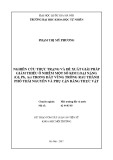
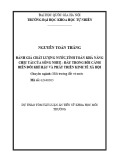
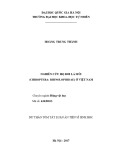
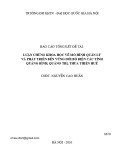
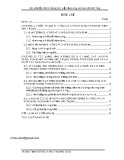
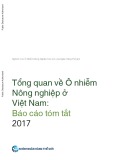
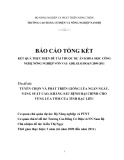
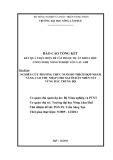
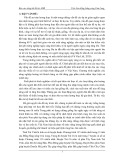
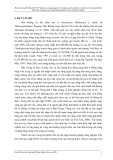





![Báo cáo seminar chuyên ngành Công nghệ hóa học và thực phẩm [Mới nhất]](https://cdn.tailieu.vn/images/document/thumbnail/2025/20250711/hienkelvinzoi@gmail.com/135x160/47051752458701.jpg)









